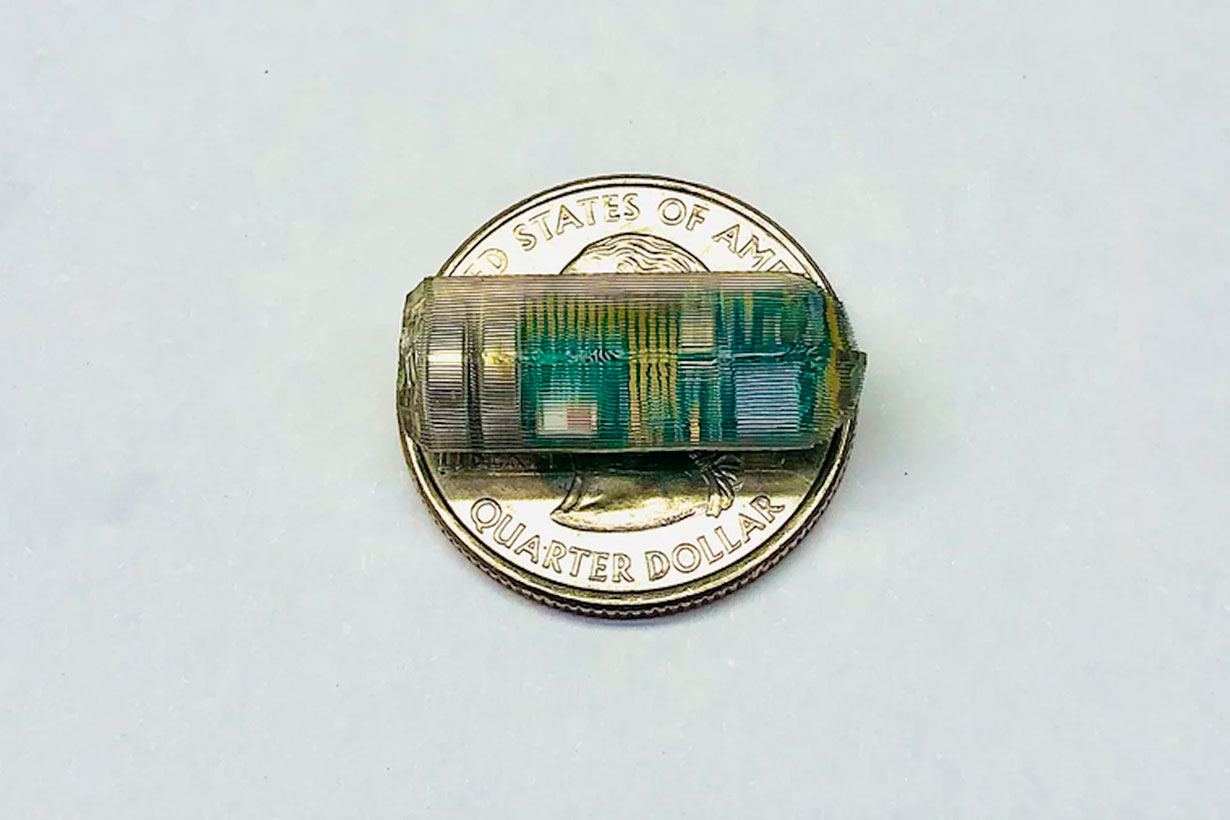CLOSE
About Elements
TANAKA is a leading company in the field of precious metals.
Advanced materials and solutions that support societal progress, the development stories behind them, the voices of engineers, and our management philosophy and vision—
Elements is an online media platform that shares insights that lead to a better society and a more prosperous future for the planet under the slogan “Mastering Precious Metals.”

This vibrating magnetic pill could one day help measure your guts

By relying on relatively simple magnetic measurements, researchers can track a capsule in a subject’s body. Image Credit: MIT
Endoscopies are as commonplace as they are unpleasant. But a new device from engineers at MIT and Caltech could soon provide a simple, accurate alternative. According to MIT’s news release alongside a recent writeup by TechCrunch, researchers have designed an ingestible, pill-shaped sensor module that can be easily tracked outside a patient’s body via electromagnetic fields. Early trials indicate the method could one day offer an effective means to assess issues like constipation, gastroesophageal reflux disease, and gastroparesis.
The team’s findings, published Monday in Nature Electronics, showcase the early stages of what may eventually become a commonplace alternative to X-rays, nuclear imaging studies, and endoscopic assessments. The setup is relatively simple: after a test animal swallowed a module capsule containing the magnetic sensor, researchers then utilized an external coil to measure its travel distance and location. Naturally, the sensor’s magnetic reading weakened as it moved through a test animal’s digestive tract, farther away from the outside reference point reader.
[Related: Watch this metallic material move like the T-1000 from ‘Terminator 2’.]
“Using an external reference sensor helps to account for the problem that every time an animal or a human is beside the coils, there is a likelihood that they will not be in exactly the same position as they were the previous time,” explained Khalil Ramadi, one of the paper’s lead authors who is now an assistant professor of bioengineering at New York University. “In the absence of having X-rays as your ground truth, it’s difficult to map out exactly where this pill is, unless you have a consistent reference that is always in the same location.”
According to MIT, the sensor also includes a wireless transmitter that sends measurements to a nearby smartphone or computer through manual triggering, or at scheduled intervals. Researchers also indicated the system can support multiple capsules simultaneously without any compromise to accuracy. Any hypothetical slowdowns in movement could indicate issues such as blockages or inflammation.
[Related: Acrobatic beetle bots could inspire the latest ‘leap’ in agriculture.]
Ingestible medical tech appears to be on the rise. Recently, scientists developed a capsule containing safe, drug-delivering robots that could release medication once its exterior barrier deteriorated. There has also been impressive development in similarly digestible, “melting” magnetic materials that may soon be utilized in medication delivery.
For Ramadi and their teammates, next steps include hopefully expanding animal testing trials before moving on to potential human clinical studies. If all goes as planned, a much easier alternative to swallowing lengthy tubes could soon be an option for millions of patients dealing with gastrointestinal issues.
This article was written by Andrew Paul from Popular Science and was legally licensed through the Industry Dive Content Marketplace. Please direct all licensing questions to legal@industrydive.com.
![]()







